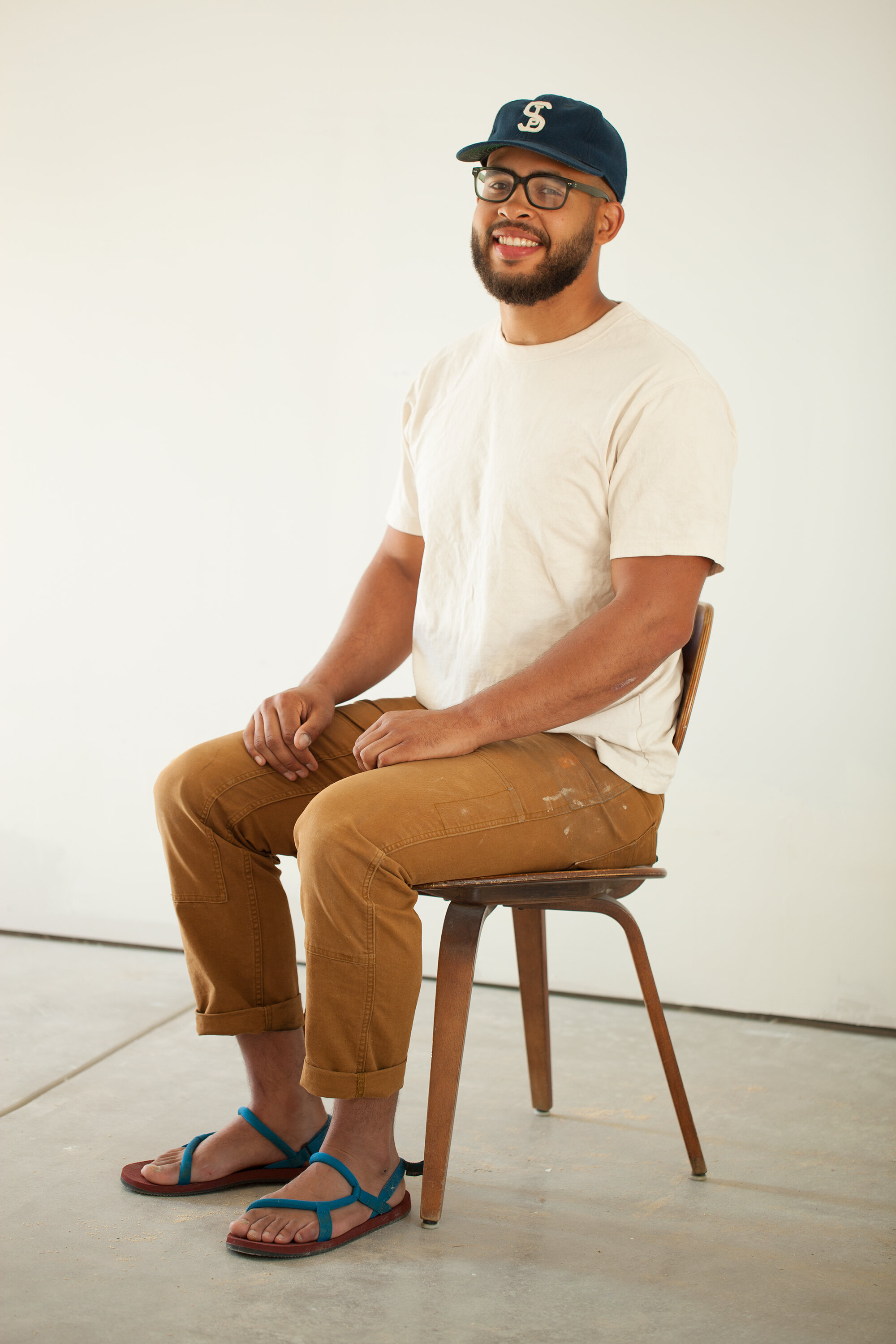Trae Story
BIOGRAPHY
Trae Story (b. 1995) is from St. Paul, Minnesota. He received his BFA from St. Cloud State University in 2018. From 2018-2019, Trae attended Montana State University as a special student, and attended Colorado State University as a post-baccalaureate from 2019-2020.
ARTIST STATEMENT
I am interested in making art without prescriptive expectations. My artwork serves as a corollary to censorship, by seeking to change the way people understand an issue or situation for the purpose of changing their actions and expectations. This happens by filling the viewer’s mind with slow-digesting abstract stimuli that prevents them from being confronted with tense topics or opposing points of view. In a society of mass information, humans tend to engage in economically prudent thought. This is counterproductive in the context of my artwork, because viewers tend to avoid addressing topics that may make them uncomfortable or anxious. I try to circumvent this problem by avoiding confrontation; this happens through the multidimensional transmutation of cartoons, folktales, pop culture, the Jim Crow Era, and my upbringing as a mixed-race individual.
traestory.com
@traestory
Q&A WITH THE ARTIST
Carbondale Clay Center (CCC): What’s your favorite beverage recipe?
Trae Story (TS): Lemon Heater or Cooler
Lemon Heater: 20oz hot water & squeeze of lemon juice
Lemon Cooler: 20oz cold water & squeeze of lemon juice
CCC: Where does your creative process begin (i.e. sketchbook, specific routine, image reference, etc.)? What considerations do you think about when creating drinking vessels?
TS: My creative process usually begins with a vague idea that is built upon and sketched in Rhino3D (CAD software). These forms are then 3D printed, and a plaster mold of the object is created. Due to the nature of slip casting (consistent wall thickness), I generally think about the dynamic of inside volume and outside space when creating drinking vessels. Nowadays I mostly make sculpture, so the considerations I make regarding pottery are mostly guided by the things I am thinking about within my sculptural work (inside/outside/form/skin/abstraction/etc)
CCC: Do you have a certain type of vessel that you prefer to drink from? Does it vary based on the beverage?I
TS: It depends on what I’m drinking. If I’m drinking water, I like to use the biggest possible vessel. If I’m drinking coffee or tea I like to use small 6-8oz cups because I drink slowly the beverage generally cools off too much before I finish it.
CCC: When creating a mug, I often hear about the detail and time taken for the handle. Do you have a handle size and type that you prefer to use? Why? Does that directly inform your creative process?
TS: prefer to use one-finger handles. My favorite cup is a heavy diner mug from the 1930s, which has a robust handle meant to survive the day to day of restaurant use. I often think about the pots that I enjoy using and incorporate these ideas into my own work, but I realize everyone has different sensibilities when using ceramics so I often make things that I wouldn’t use.
CCC: What makes handmade pottery unique to you? Why use a handmade object to sip your coffee, tea, water, etc.?
TS: In general, I use handmade pots because they are a joy to use. With that being said, it comes down to how much thought the maker/designer has put into the pot. I’m equally likely to use a handmade pot as I am to use a factory made one. One just has a bit more “hand” involved than the other.
CCC: What influences your pots? What are you looking at or thinking about when making specific beverageware?
TS: I think the biggest influence in the pots I make come from my upbringing in Minnesota (mingeisota), but I am definitely heavily influenced by artists in other mediums and the formal considerations in their work.
CCC: Is there a certain type of drinking vessel that you prefer making? Or one that seems to always be sought after by customers?
TS: I like to make small one-finger handle cups and tall cups that hold a lot of liquid.
CCC: How do you define art within your functional pottery? Do you consider pottery to be a form of art?
TS: At one point the pots I made were driven by how well they functioned, because I really enjoyed the process of engineering a pot that worked well. Now when I make pots (rarely) the work tends to be driven by formal/aesthetic concerns that tend to put function on the back burner. As far as pottery being a form of art, I think that anything created that involves thoughtful content is a form of art.
CCC: When creating pottery, do you work in a series or body of work? At what point do you transition from one series to another?
TS: I get bored easily so I tend to make one-offs or short series. As soon as I get bored and the molds begin to collect dust, they get thrown away and I move on to the next idea.
CCC: What keeps you inspired in the studio?
TS: I think other art inspires me, but I don’t see a lot of other art in person so most of my inspiration materializes from the making process. One thing is made, and leads to a new idea that I’m excited about.
CCC: How do color, surface, and form influence your work? Does each of those design elements play equal roles in your making process? Is one emphasized over others?
TS: I generally am most excited by form. Lately surface has played a very small role in my work, and much of what I’m making has little to no glaze. I find that I get flustered when I have too many options for color so I restrict myself to a limited palette.



